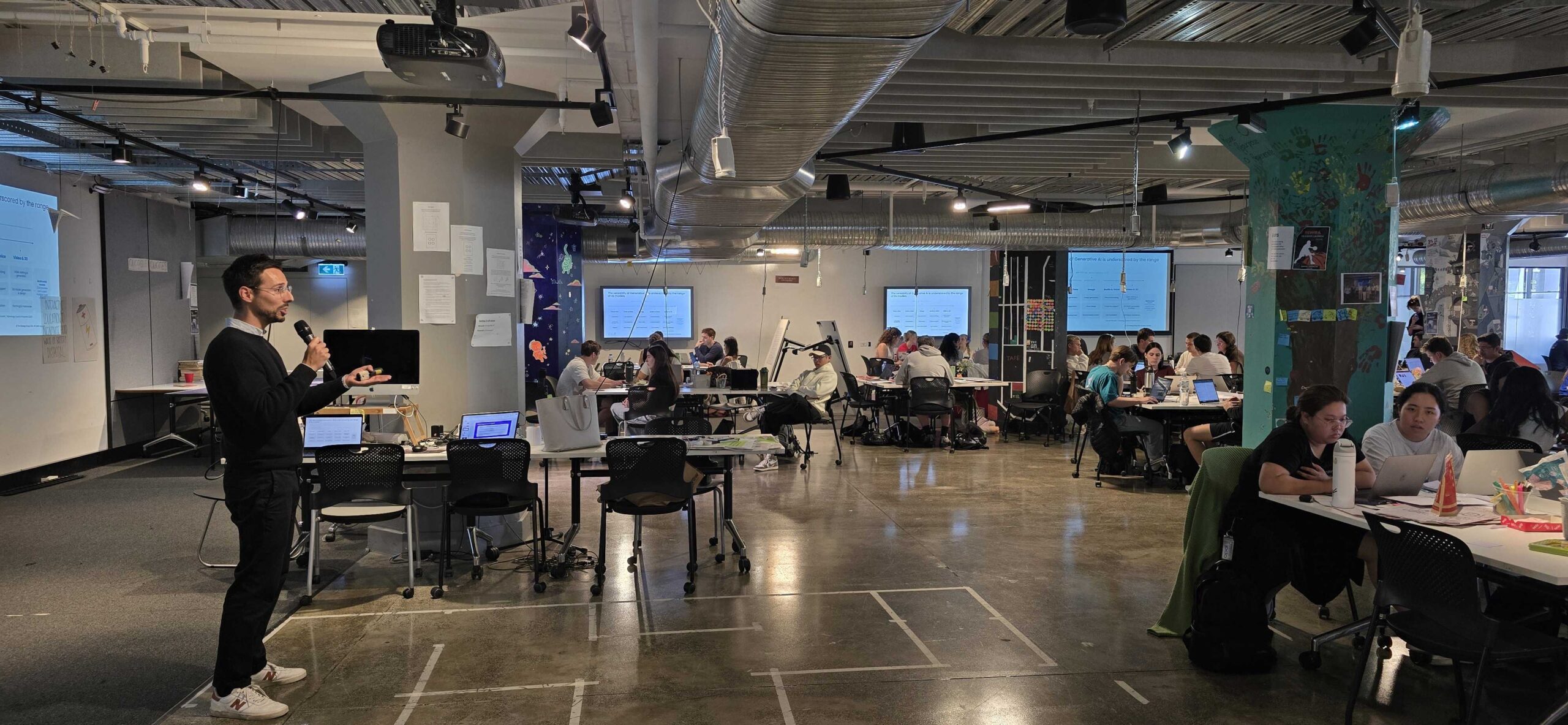As offices transition to post-pandemic work life, one thing is clear: the hybrid workplace model is here to stay. The World Economic Forum predicts that by 2025, “Work will not be somewhere you go, but something you do.” However, the hybrid workplace model is experiencing some growing pains. In the scramble to adapt, the focus on optimising customer experience and maintaining the bottom line can often come at the expense of how employees experience their hybrid workplace.
What is Employee Experience?
The Employee experience is a business strategy that aims to attract and retain engaged employees by continually improving their working environment. The strategy extends to every aspect of the employee journey, from onboarding and training to advancement and offboarding. Properly managed, it involves research, KPIs, and tracking similar to what you’d employ in a customer experience strategy.
During and in the wake of the pandemic, companies increased their focus on how work was impacting their staff as employees reported mental health issues and burnout. A recent Deloitte survey found that 98% of CEOs plan to continue to focus on employee wellbeing, even after the pandemic is over. With technological shifts creating a new workplace paradigm, employees and employers have both been challenged to adapt. Maintaining a positive employee experience over the course of this adaptation is what continues to set successful companies apart. However, new processes also make it easy to overlook aspects of the employee experience that employers haven’t had to consider in the past.
How Hybrid Workplaces Neglect the Employee Experience
According to Jacob Morgan, there are three workplace environments that make up the total employee experience: cultural, physical, and technological environments. Creating a truly great workplace requires a sustained focus on all three of these environments. However, hybrid workplaces disrupt the way these three environments interact—and businesses that don’t pivot their employee experience strategy could end up neglecting it to address this disruption. Here are the problems that hybrid workplaces can create for each environment:
- Physical: home-based employees lack access to in-house resources
Keeping valued resources and perks at the office without considering the needs of employees working from home is one way employers can ignore the employee experience. In the past, forward-thinking employers designed their offices to be a haven for employees in the name of employee experience. An extreme example of this was in Silicon Valley, where tech giants invested in expansive offices full of perks like smoothie bars and free yoga classes. However, tech companies are rethinking these strategies in the face of new hybrid working arrangements, since employees working from home won’t benefit from in-office perks.
When employees regularly work from home, their homes become a part of their work environment. Parents caring for small children may face more distraction; some employees might not have optimal set-ups and supplies at home. On the other hand, employees required to commute will face more time and transportation costs than those working from home. As a result, the perks that employees care about in a hybrid model are more likely to be things that create flexibility, accessibility and equality.
Business strategists often point out the reduced overhead costs of a hybrid workplace. Fewer in-person meetings can mean savings on rent, office supplies, catering, and other in-house expenses. But it’s important to ensure that those costs aren’t being transferred to employees. In order to keep the workplace fair and accessible to everyone, environmental perks for a hybrid workplace might include childcare coverage, a budget for office supplies, or reimbursement for commutes when employees need to come in.
- Cultural: hybrid workplaces can shift power dynamics
It’s not just redistributing physical resources that employers need to focus on. Hybrid workplace models can create social power imbalances, too. In a recent HBR article, Mark Mortensen and Martine Haas point out that employees who have more in-person office time might have advantages over those that work at home, due to their increased visibility. People that interact in person make more of an impression on coworkers and bosses, and employers risk giving in-person employees more attention and credit than home-based employees if they’re not careful.
The authors also commented on the importance of psychological safety for creating successful hybrid workplaces. When someone’s home becomes a place to do work, the boundaries between home and work life become blurry. That means that traditional expectations of keeping home issues separate from the workplace might not be realistic for some. Health concerns and childcare issues might have an impact on employees’ ability to come into the office or to work from home. Employers who don’t make an effort to open doors for these discussions may create a hostile environment for some employees.
Employers need to be alert to how hybrid workplaces may shift office dynamics, and threaten employee dignity and equality. They need to ensure that all employees stay part of the team and in the loop, whether they’re working from home or in the office, and they need to foster an environment of trust in which employees feel comfortable disclosing when something is not working for them.
- Technological: tech setups often aren’t adequate for hybrid work
Most companies have tech setups that make remote work possible, but they aren’t ideal for ongoing remote work. For example, having a boardroom without a screen for remote callers will limit some participants’ visibility in meetings. Some companies might have cloud software for business processes, but lack messaging software that lets employees contact each other remotely. Employers introducing a hybrid model need to rethink their business software and hardware strategy, to optimize it in a way that helps the whole office connect.
Additionally, those working from home might not have the best hardware setup or may have a spotty internet connection. Employees who need mobile devices to do their job might not wish to use their personal phones for work. Hybrid work arrangements can turn these small annoyances into a major workplace issue.
Initiatives like budgets for computers and devices and stipends for internet costs can help improve the experience of employees who choose to work from home. Tech setups can be modified to include communication software and more display screens in conference rooms for those working from the office. Employers creating hybrid workplaces should ideally find ways that technology can replicate or improve on their existing processes. With all the solutions out there, hybrid workplaces don’t have to be a hindrance to important business functions.
Why it Matters
When your employees experience chronic frustration and sense a lack of empathy and respect for their needs, it can spell disaster for your business. Having a bad employee experience means you’ll lose your best performers, who will seek out companies that have more to offer. In addition to higher turnover, negative employee experience will lead to lower morale and productivity among the employees who are still around. When things reach this point, the employee experience can become difficult to fix.
Employee Experience Should Guide Processes
Transforming the workspace involves creating a lot of new processes. Instead of focusing solely on budget or customer experience KPIs, make sure your new processes are informed by a solid employee experience strategy. That can mean a few more meetings, surveys, or virtual focus groups, and tracking measures to ensure that your responses to employee input are effective. But it also means your hybrid workplace will foster growth, for both your employees and your company.
Here at the Strategy Group, we work with organisations to develop, define, and execute effective employee strategies that place human-centred design at the forefront of innovation. With our help organisations can discover the deeper needs of their employees and identify opportunities to foster a culture of growth and innovation. If you’re looking to deploy an employee strategy, please do not hesitate to reach out to us.
Are you following us on social media?LinkedInInstagram
Contact Us
Have any questions? Want to know how we can help you and your organisation? Contact us using this form.
We can work with you to design and support implementation of a strategy for your business unit, for your entire organisation, or for any segment of your organisation where a fresh approach will add value.
We will use a combination of globally-recognised leading-edge processes, coupled with our proprietary validated toolbox to develop a bespoke, customised strategy, which we can assist you in implementing, that will deliver tangible impact and value to your organisation and your customers.
We have been designing and implementing strategy solutions since 2003 and we have the expertise and the experience not only to deliver, but to overdeliver.
Join 10,000 others who want the latest insights, tools, tips and resources. We help you get better results by staying on top of the latest methodologies and thinking.












